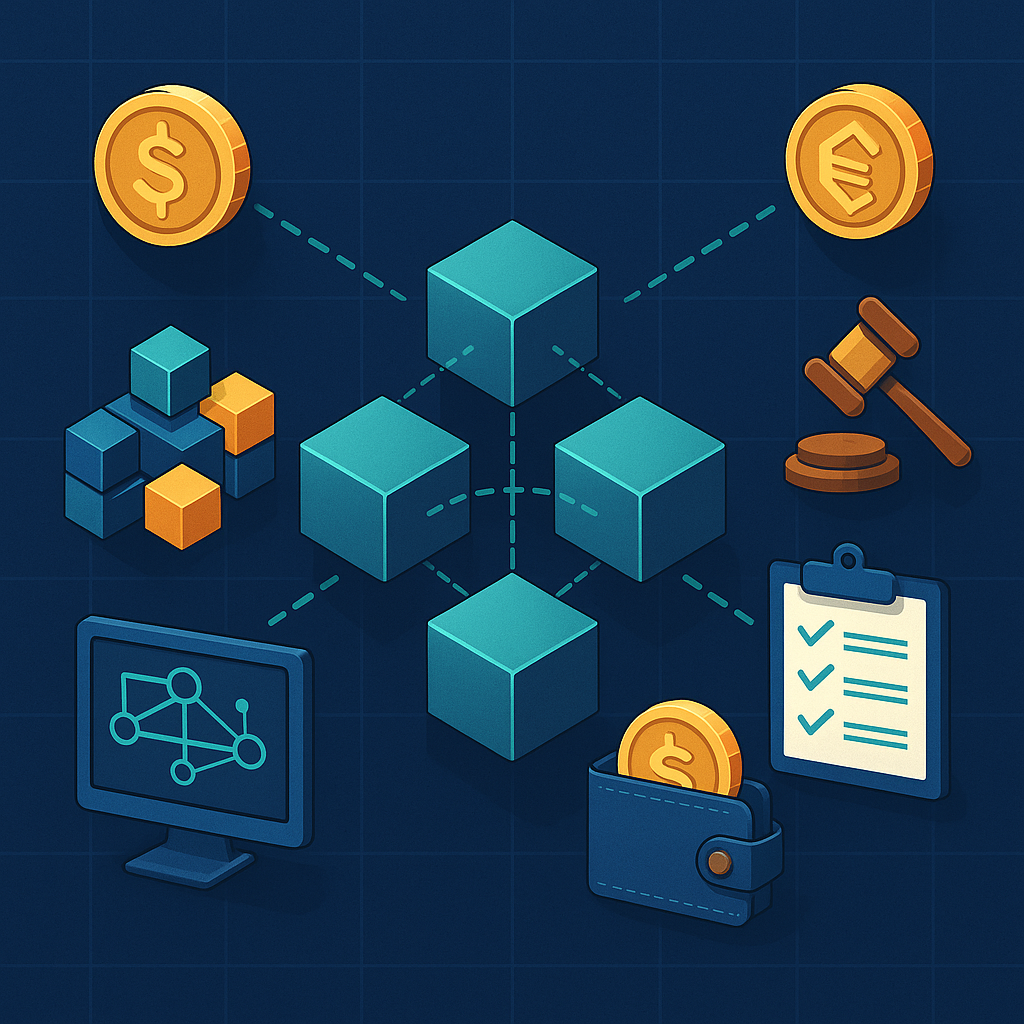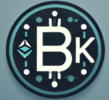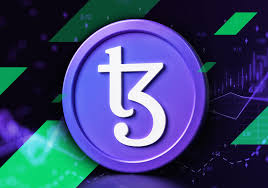Why one of the most underrated smart contract platforms may be built for the long haul
🌀 Introduction: The Chain That Upgrades Itself
In a crypto world dominated by hype, forks, and flame wars, Tezos has been quietly doing something remarkable:
It evolves… without splitting.
While other blockchains rely on hard forks or core teams to coordinate upgrades, Tezos (XTZ) introduced a radical idea: let the chain upgrade itself—governed entirely by its users.
This self-amending, decentralized, upgrade-friendly network has flown under the radar compared to flashier projects, but those in the know recognize it for what it is:
A deeply researched, governance-first blockchain that may just be future-proof by design.
So what is Tezos really all about? How does it work? Why is it unique? And is it a sleeping giant in the Layer 1 wars?
Let’s unpack Tezos—from its academic roots to its NFT renaissance, from its tokenomics to its governance mechanics, and why it might be the most overlooked serious contender in crypto today.

🔗 What Is Tezos?
Tezos is a decentralized, open-source blockchain launched in 2018 that supports smart contracts and decentralized applications (dApps). Its standout feature is its on-chain governance model, which enables the protocol to upgrade without hard forks.
Tezos was built to solve major issues in blockchain development, including:
- Upgrade friction
- Governance centralization
- Security for smart contracts
- Long-term sustainability
It’s not just another Ethereum clone. Tezos uses a unique self-amending protocol and formal verification, aiming to be a chain you can trust in court, not just in code.
🧬 The Origin Story: From Academia to Blockchain
Tezos was founded by Arthur and Kathleen Breitman, two mathematicians and financial professionals. The idea for Tezos emerged as early as 2014, long before smart contract chains flooded the market.
Arthur Breitman published two position papers under the pseudonym “L.M. Goodman” outlining a blockchain that:
- Avoided contentious forks (like the Bitcoin vs. Bitcoin Cash split)
- Could formally verify smart contracts
- Would let stakeholders govern and upgrade the protocol directly
The vision: “A blockchain that can evolve without chaos.”
The Tezos Foundation held one of the most successful ICOs in history in 2017, raising over $232 million. After a rocky legal and organizational delay, the mainnet launched in June 2018.
Since then, Tezos has continued upgrading itself—over a dozen times—without ever forking.
🧠 Core Features of Tezos
Let’s dig into what makes Tezos truly different.
🔁 1. Self-Amending Governance
Tezos can upgrade itself. That’s its killer feature.
Most blockchains require human coordination for major upgrades, often leading to:
- Controversial forks
- Fragmented communities
- Upgrade paralysis
Tezos bakes governance directly into the protocol.
Token holders vote on proposed upgrades.
The winning proposal is automatically adopted if quorum and participation thresholds are met.
No forks. No revolts. No centralized core team pushing updates.
Upgrades to the protocol are written, proposed, tested, voted on, and deployed—all on-chain.
This means:
- Faster innovation
- Cleaner consensus
- Less drama
It’s one of the most advanced implementations of on-chain governance in crypto.
🔐 2. Formal Verification
Tezos supports formal verification—a mathematical method of proving that code behaves as intended.
This is especially useful in:
- Financial contracts
- DeFi platforms
- High-assurance environments like supply chains or aerospace
Most blockchains offer “code-is-law” execution. Tezos offers “provably-correct code” if you choose to use it.
Developers write contracts in Michelson, a low-level, stack-based language, or in LIGO, SmartPy, and other high-level languages that compile down to Michelson.
“Trustless” doesn’t mean “reckless.” Tezos wants your smart contracts to be right.
🛠️ 3. Proof-of-Stake (PoS) with Liquid Baking
Tezos uses an energy-efficient Liquid Proof-of-Stake (LPoS) model.
- Token holders can delegate their stake to bakers (validators)
- Bakers validate blocks and receive rewards
- Delegators earn a share without locking or losing custody of their funds
This encourages participation and decentralization.
There are over 400 active bakers, and no minimum stake to delegate—making it one of the most accessible PoS ecosystems around.
🔄 4. Regular, Seamless Upgrades
Tezos upgrades every few months—more often than almost any other chain.
Recent upgrades (as of 2025) have included:
- Faster finality
- Reduced gas costs
- Enhanced NFT functionality
- Improved Layer 2 support (zk-rollups, optimistic rollups)
- New Michelson instructions
Each upgrade is community-proposed and community-approved. And none have required a fork.
🌐 5. Thriving Global Ecosystem
Tezos has a strong international presence, including:
- Active dev communities in France, India, and Latin America
- Enterprise partnerships with Ubisoft, Red Bull Racing, and Société Générale
- Government and institutional pilots for CBDCs and land registries
- Major NFT marketplaces like Objkt, fxhash, and Kalamint
Despite flying under the radar, Tezos is used in the real world—not just the crypto bubble.
💰 Tezos Tokenomics (XTZ)
Tezos’ native token is XTZ, also known as a “tez” or “tezzie.”
Utility of XTZ:
- Staking / Baking (validators lock XTZ to secure the chain)
- Delegation (holders earn rewards without baking themselves)
- Voting (XTZ holders vote on protocol upgrades)
- Fees (used to pay gas on the network)
Supply Model:
- No max supply (inflationary)
- Current inflation: ~4.5% annually
- Inflation is counterbalanced by network growth and staking participation (~80% of XTZ is staked)
The economic model incentivizes participation and decentralization over hoarding.
🎨 Tezos and the NFT Boom
Tezos has become a dark horse favorite for artists and collectors in the NFT space, especially among:
- Digital fine artists
- Generative art creators
- Eco-conscious collectors
Why?
- Low fees (mint for pennies)
- Energy-efficient PoS (good PR for artists)
- Vibrant indie scene (no gas wars or gatekeeping)
Top Tezos NFT Platforms:
- Objkt.com – The largest marketplace, supports everything from art to music
- fxhash – Leader in generative and algorithmic art
- Kalamint – Curated art platform
- Versum – Focused on experimental and community-led curation
Tezos NFTs have sold for hundreds of thousands of dollars and powered full exhibitions at Sotheby’s and Art Basel.
🧮 Governance in Action: A Real Example
Let’s walk through a real Tezos upgrade cycle:
- A developer team proposes a new protocol (say, “Oxford”) with changes to block size and gas.
- The proposal is uploaded on-chain for testing and voting.
- Community votes YES (XTZ is used to weigh votes).
- If approved, the upgrade is automatically adopted in the next cycle.
- No forks. No airdrops. No drama.
Each upgrade cycle includes:
- Proposal period
- Exploration vote
- Testing phase
- Promotion vote
- Adoption
This process repeats every 3–6 months, making Tezos one of the most actively upgraded Layer 1 chains.
🛡️ Security and Reliability
Tezos is designed for high assurance and safety, making it attractive to:
- Banks
- Governments
- Industrial institutions
Features like:
- Formal verification
- Deterministic execution
- On-chain upgrades without downtime
- Secure staking via hardware wallets
Make it a strong candidate for real-world, large-scale adoption.
💬 Criticisms and Misconceptions
No project is perfect. Here are some common critiques of Tezos:
❌ “It’s too complicated to build on.”
Michelson is low-level, and onboarding new devs takes time. But high-level languages (SmartPy, LIGO) are improving that.
❌ “It’s not marketing itself well.”
True. Tezos is quietly excellent—but rarely loud. This has slowed mainstream adoption.
❌ “It’s behind Ethereum.”
Depends on how you measure. Ethereum has the dApp volume, but Tezos has more elegant governance and built-in upgrades.
❌ “It had a messy launch.”
Also true. Legal drama delayed its launch, but that’s ancient history now.
🔭 The Future of Tezos (2025 and Beyond)
Tezos continues to innovate with:
- Rollups and scalability
- Enhanced NFT tooling
- Web3 identity frameworks
- DAO infrastructure
- Institutional onboarding
With its battle-tested governance, low carbon footprint, and focus on formal correctness, Tezos may be perfectly positioned for:
- Government blockchain pilots
- CBDC architecture
- Sustainable Web3 art and culture
- High-assurance enterprise use cases
It’s not trying to be the fastest or flashiest chain—but the most correct one.
And that might matter more in the long run.
🧠 Final Thoughts: Tezos Isn’t Loud—It’s Smart
If crypto were a popularity contest, Tezos might not win the crown.
But if it’s a test of time, elegance, and design?
Tezos might be quietly building the future while everyone else fights over gas fees and governance wars.
It’s the chain for:
- Developers who care about correctness
- Artists who care about the environment
- Institutions who care about reliability
- Voters who want a voice without a revolution
So the next time you scroll through charts and coins, and wonder what’s truly different—remember Tezos.
It’s not trying to fork the system.
It’s trying to refine it.



